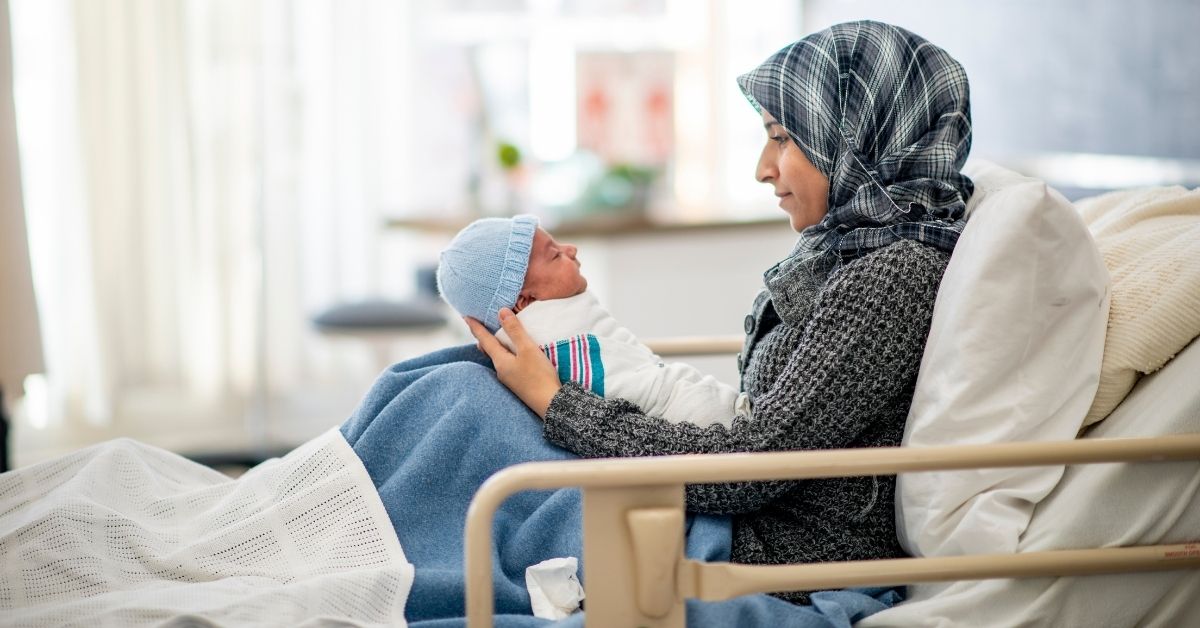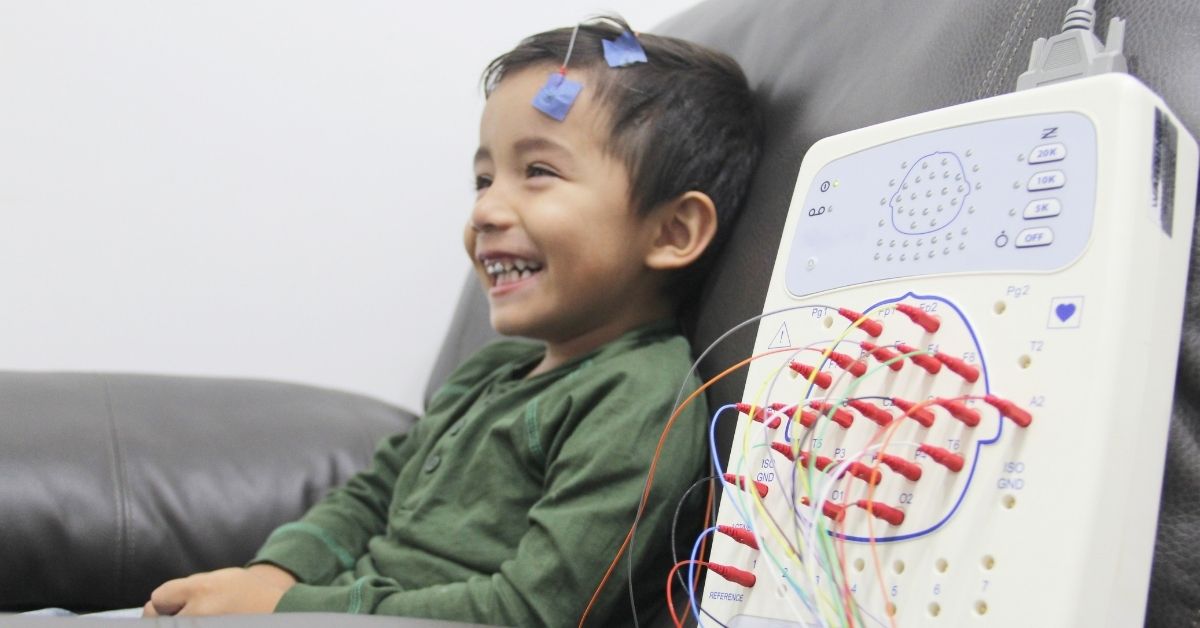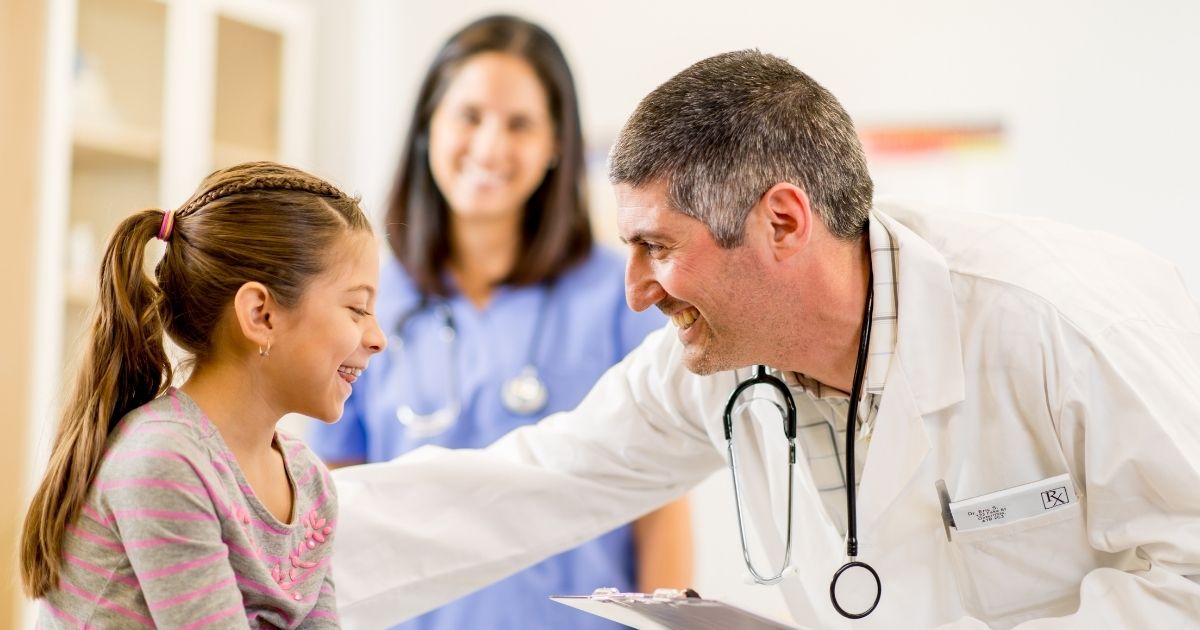
Authors: Mary Jeno, MD; Sreenath Thati Ganganna, MD, MBBS
University of Iowa, Stead Family Children’s Hospital, Iowa City, IA
Reviewed: July 2021
SUMMARY
Tuberous sclerosis complex (TSC) is a rare genetic disorder in which noncancerous tumors grow in important organs. For example, they may grow in the brain, eyes, lungs, skin, heart, and kidneys. Symptoms can vary depending on the organs involved.
TSC is often diagnosed in a newborn or in infancy. However, in very mild cases, it may not be noticed until later in childhood or even adulthood.
Most cases of TSC are due to a mutation in the TSC1 or TSC2 genes. TSC appears in about 1 in 5,000 to 10,000 live births. Males and females seem to be affected equally.
The disease is lifelong. There is no cure for TSC, but there is treatment for the symptoms caused by the growths.
JUMP TO
Disorder Overview
DESCRIPTION
TSC leads to growths, or noncancerous tumors, called “hamartomas.” Hamartomas can impact the function of the organ they are growing in. This impact will be based on the size of the growth and its location. Cancerous tumors are rare in TSC.
Variability
TSC is unique for each person. It is difficult to predict who will develop growths and where they will occur. However, growths most commonly appear in a particular set of locations. These locations include:
- Brain
- Kidneys
- Heart
- Lungs
- Skin
Because of all this variation, the spectrum of clinical features can also range from mild at one end to severe or prominent at the other. For this reason, the age at diagnosis may vary:
- Mild cases can result in a late diagnosis in older children and young adults
- Severe cases can result in an early diagnosis in infancy
Complications
Most patients with TSC will be diagnosed with other medical problems caused by the condition. Complications can include:
- Seizures
- Cognitive or learning difficulties
- Behavioral problems
- Skin abnormalities
- Kidney problems
- Lung lesions
TSC can cause serious or life-threating complications depending upon where the tumors grow and how big they are. For example:
- If growths occur in the heart, they can affect blood flow
- If growths occur in the brain, they can cause increased pressure inside the skull, or block flow of fluid around the brain
- If growths occur in the kidneys, they can lead to high blood pressure

SIGNS AND SYMPTOMS
TSC is diagnosed on the basis of:
- Clinical history
- Findings on physical examination
- Special scans with magnetic resonance imaging (MRI), ultrasound, and computerized tomography (CT)
Diagnosis can be confirmed in two ways.
- TSC is confirmed when patients have two or more of the distinctive features described below.
- TSC can also be confirmed if genetic testing shows mutations in the TSC1 or TSC2 genes.
A variety of distinctive features can confirm TSC.
These features include:
Skin abnormalities
These can appear as:
- Small areas of thickened, smooth skin called shagreen patches
- Bumps under the nails that look like extra skin
- Patches of light-colored skin called ash leaf spots
- In childhood, there are often small bumps on the face that resemble acne and are called facial angiofibromas
Brain abnormalities
Growths in the brain are detected with imaging studies such as brain MRI.
They may include:
- Cortical tubers. Cortical tubers are typically found throughout the brain. They are very common in patients with TSC. Cortical tubers can cause seizures. These seizures are, in many patients, the first symptom that leads to investigation of TSC.
- Giant cell astrocytomas. Giant cell astrocytomas are less-common cancerous tumors. They can cause problems with the flow of spinal fluid. This can result in increased pressure in the brain and enlargement of head size.
- Subependymal nodules. Subependymal nodules are very common. They are growths that occur along the walls of the fluid-filled pockets of brain known as ventricles.
Developmental delays
Some people with TSC have normal development. However, typically, people with TSC have developmental delays or intellectual disability. Developmental delays are often seen in early childhood. They appear as delayed achievement of developmental milestones. Parents and teachers may also notice hyperactivity or behavioral problems in children with TSC.
Kidney growths
Heart tumors
These are also called cardiac rhabdomyomas. They are most often found in infants. They are diagnosed with an ultrasound of the heart (echocardiogram). They typically shrink as infants get older, or by around age 2. Heart tumors can obstruct blood flow in heart or cause heart rhythm problems. They may also remain silent, not causing any problems.
Eye findings
Subtle findings in patients with TSC include:
- Enamel pits in the teeth
- Growths in liver
- Growths along the gum lines
Sometimes, signs of TSC are missed. This is true particularly if
- There are very few hamartomas (growths), and they are not confined to major organs such as the brain
- A child has relatively normal or slight developmental delay
- A child does not show many other signs, such as seizures
However, it is usually difficult to miss TSC due to the number of organs that may be involved. TSC is, in fact, often discovered with the use of ultrasound in a fetus during pregnancy.

CAUSES
About 75% to 80% of patients with TSC have a mutation in either the TSC1 or TSC2 gene. These genes provide instructions to make a protein that helps control cell growth and reproduction. When these genes are affected, an individual develops the tendency to form hamartomas (growths).
Most TSC patients with a defective gene have de novo genetic mutations. De novo mutations are spontaneous. They are new, rather than inherited from a parent. They occur in eggs, sperm, or fertilized eggs. Some TSC patients—about 20%—inherited a defective TSC1 or TSC2 gene from a mother or father.
LAB INVESTIGATIONS
Several types of lab tests are used in TSC.
These include:
Genetic testing
Magnetic resonance imaging (MRI)
Computerized tomography (CT) scan
Eye exam
Tests are typically repeated either every year or every few years:
MRI of brain

TREATMENT AND THERAPIES
Treatment of TSC is based on the type and severity of the symptoms. It therefore varies from patient to patient.
Treating Seizures
Seizures in TSC patients are usually treated with standard antiseizure medications.
Some patients have a special type of seizure called infantile spasms. These patients need specific treatments.
Sometimes, seizures do not respond to antiseizure medications. In these cases, surgery may be used to remove the brain tubers that may be causing them.
Treating Cancerous Growths
In rare cases, cancerous growths can occur in the brain. These growths can block spinal fluid. They may be treated with:
- Surgery.
- Everolimus. Everolimus is a special medication with anticancer and immunity suppression properties. It can also help reduce the size of the tubers/growths, in addition to helping reduce seizures.
Treating Other Conditions
Other TSC-related conditions that may require treatment include:
- ADHD: Medication can help improve focus.
- Developmental delay and intellectual disability: Therapies and special assistance in school can help.
- Growths in kidneys and lungs: Medical and surgical treatments may be needed. Everolimus is also used to reduce the size of the growths in the kidneys.
- Vision problems: Regular eye checkups and medical or surgical interventions may be needed.
Treatment Team
The team involved in treating patients with TSC is usually very large.
It can include:
Neuropsychologists
Nephrologists

OUTLOOK
It is not possible to outgrow TSC. It is a lifelong diagnosis. Outcomes are dependent on many factors.
Childhood
Many children with TSC can attend school and participate in sports and activities. It is likely that learning and development will be delayed. However, this will affect each child differently. It is challenging to predict how each child will develop.
Children will likely require some assistance in school. This could include things such as:
- A paraprofessional to assist in education
- Adjusted testing in the classroom setting
Adulthood
Adulthood outcomes will vary based on the severity of the disease. Often, children with TSC grow into healthy, independent adults. They can live full lives with the help of appropriate treatments.
However, some will continue to experience disabling seizures, developmental delay, or intellectual disability. They will require special assistance.
Family Dynamic
TSC will affect the family dynamic in several ways. It requires:
- Families to have a baseline knowledge of seizure safety
- Medications to be given at regularly scheduled times
- More frequent doctor’s appointments
- Sometimes, more frequent hospitalizations
The goal of treatment is to help a child with TSC live a full and meaningful life both in the family setting and in the social setting.
Diet and Lifestyle
Diets such as the ketogenic diet may be used for seizure maintenance. However, dietary and lifestyle changes do not impact the disease itself. Still, it is important for all children and adults to stay active and work on healthy lifestyle choices.
Resources
Organizations
TSC Alliance
The TSC Alliance is dedicated to finding a cure for tuberous sclerosis complex, while improving the lives of those affected. The TSC Alliance was founded on the core belief that community is a sustaining strength in the face of difficult challenges.
The TSC Alliance hosts a private Facebook group, TSC Alliance Tuberous Sclerosis Complex Discussion Group with over 10,000 members. This discussion group is made available for caregivers, family members and other interested parties to discuss the various aspects of dealing with tuberous sclerosis complex.
Infantile Spasms Action Network
The Infantile Spasms Action Network (ISAN) is a collaborative network of over 30 national and international entities focused on raising awareness for infantile spasms. To learn more about the group please visit their website.
Pediatric Epilepsy Surgery Alliance
The Pediatric Epilepsy Surgery Alliance (formerly known as The Brain Recovery Project) enhances the lives of children who need neurosurgery to treat medication-resistant epilepsy. They empower families with research, support services, and impactful programs before, during, and after surgery. PESA’s programs include research-based, reliable information to help parents and caregivers understand when a child’s seizures are drug-resistant; the risks and dangers of seizures; the pros and cons of the various neurosurgeries to treat epilepsy; the medical, cognitive, and behavioral challenges a child may have throughout life; school, financial aid, and life care issues. PESA’s resources include a comprehensive website with downloadable guides, pre-recorded webinars, and virtual workshops; an informative YouTube channel with comprehensive information about epilepsy surgery and its effects; a private Facebook group (Education After Pediatric Epilepsy Surgery) with over 300 members; Power Hour (bi-monthly open forums and live virtual workshops on various topics); and free school training to help your child’s education team understand the impact of their epilepsy surgery in school. Their Peer Support Program will connect you with a parent who has been there. The Pediatric Epilepsy Surgery Alliance also hosts biennial family conferences and regional events that allow families to learn from experts, connect with other families, and form lifelong friendships. They also provide a travel scholarship of up to $1,000 to families in need to fund travel to a level 4 epilepsy center for a surgical evaluation.
In addition, PESA has resources for medical professionals to assist in helping clinicians help the parents of their patients find the resources they need after surgery. Educators and therapists will also find helpful resources and information, including videos, guides, and relevant research. Patients who have undergone surgery are encouraged to register with the Global Pediatric Epilepsy Surgery Registry to help set future research priorities.

Publications
JCN Podcast on Tuberous Sclerosis
Podcast from SAGE Neuroscience and Neurology/Journal of Child Neurology (JCN). Dr. Alison Christy speaks with Dr. Jurriaan Peters of Boston Children’s Hospital about their article published in JCN “The Evolution of Subclinical Seizures in Children With Tuberous Sclerosis Complex”. Then Dr. Christine Park of Brooke Army Medical Center in San Antonio gives an overview of the disease. Finally, Dr. Alison Christy interviews Dr. Derek Bauer of the University of Virginia on their personal connection with the disease as well as their career path.
Child Neurology Foundation (CNF) solicits resources from the community to be included on this webpage through an application process. CNF reserves the right to remove entities at any time if information is deemed inappropriate or inconsistent with the mission, vision, and values of CNF.
Research
ClinicalTrials.gov for Tuberous Sclerosis Complex are clinical trials that are recruiting or will be recruiting. Updates are made daily, so you are encouraged to check back frequently.
ClinicalTrials.gov is a database of privately and publicly funded clinical studies conducted around the world. This is a resource provided by the U.S. National Library of Medicine (NLM), which is an institute within the National Institutes of Health (NIH). Listing a study does not mean it has been evaluated by the U.S. Federal Government. Please read the NLM disclaimer for details.
Before participating in a study, you are encouraged to talk to your health care provider and learn about the risks and potential benefits.
Family Stories
A tuberous sclerosis complex (TSC) diagnosis can be overwhelming, and many people say they feel alone. “Your Journey with Tuberous Sclerosis Complex (TSC) — You Are Not Alone”, a video from the TSC Alliance, features interviews with parents who have children with TSC as well as adults with TSC and TSC Alliance staff members, who each explain why you are not alone in the journey of TSC.
The information in the CNF Child Neurology Disorder Directory is not intended to provide diagnosis, treatment, or medical advice and should not be considered a substitute for advice from a healthcare professional. Content provided is for informational purposes only. CNF is not responsible for actions taken based on the information included on this webpage. Please consult with a physician or other healthcare professional regarding any medical or health related diagnosis or treatment options.
References
Northrup H, Koenig MK, Pearson DA, et al. Tuberous Sclerosis Complex. 1999 Jul 13 [Updated 2020 Apr 16]. In: Adam MP, Ardinger HH, Pagon RA, et al., editors. GeneReviews® [Internet]. Seattle (WA): University of Washington, Seattle; 1993-2021. Available from: https://www.ncbi.nlm.nih.gov/books/NBK1220/
Goodman M, Lamm SH, Engel A, et al. Cortical tuber count: a biomarker indicating neurologic severity of tuberous sclerosis complex. J Child Neurol. 1997 Feb. 12(2):85-90. PMID: 9075016; https://doi.org/10.1177/088307389701200203
Northrup H, Krueger DA. Tuberous sclerosis complex diagnostic criteria update: recommendations of the 2012 International Tuberous Sclerosis Complex Consensus Conference. Pediatr Neurol. 2013 Oct. 49(4):243-54. PMID: 24053982; https://doi.org/10.1016/j.pediatrneurol.2013.08.001
Au KS, Williams AT, Gambello MJ, Northrup H. Molecular genetic basis of tuberous sclerosis complex: from bench to bedside. J Child Neurol. 2004 Sep;19(9):699-709. PMID: 15563017; https://doi.org/10.1177/08830738040190091101
Stephanie Rnadle, MD, MS, et al. Tuberous sclerosis complex: Genetics, clinical features, and diagnosis. In: UpToDate, Waltham, MA. (Accessed on June 28, 2021). https://www.uptodate.com/contents/tuberous-sclerosis-complex-genetics-clinical-features-and-diagnosis
Crino PB, Nathanson KL, Henske EP. The tuberous sclerosis complex. N Engl J Med. 2006 Sep 28;355(13):1345-56. PMID: 17005952; https://doi.org/10.1056/NEJMra055323
